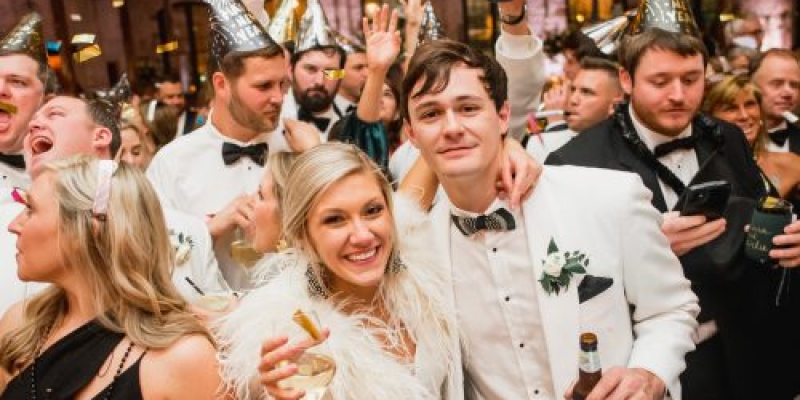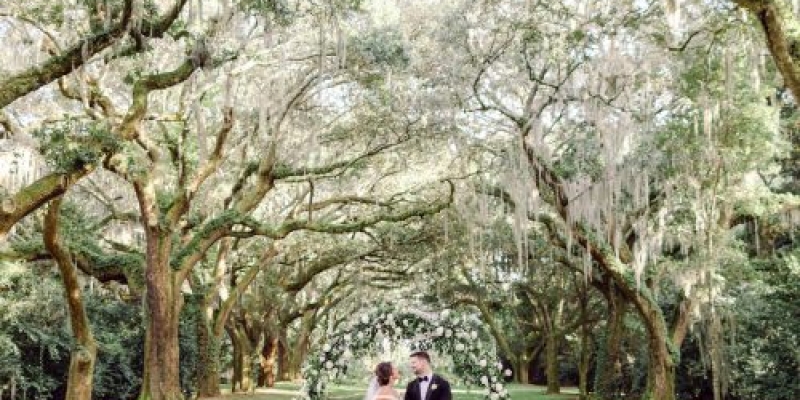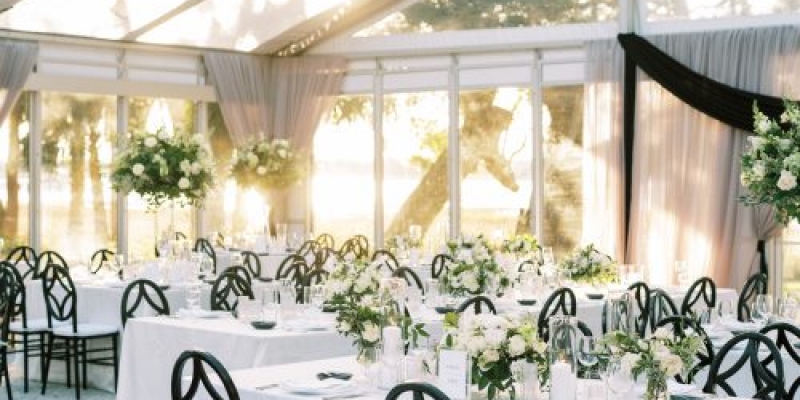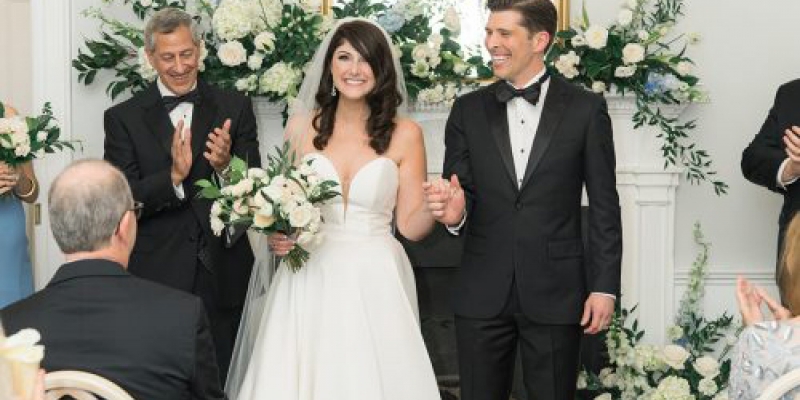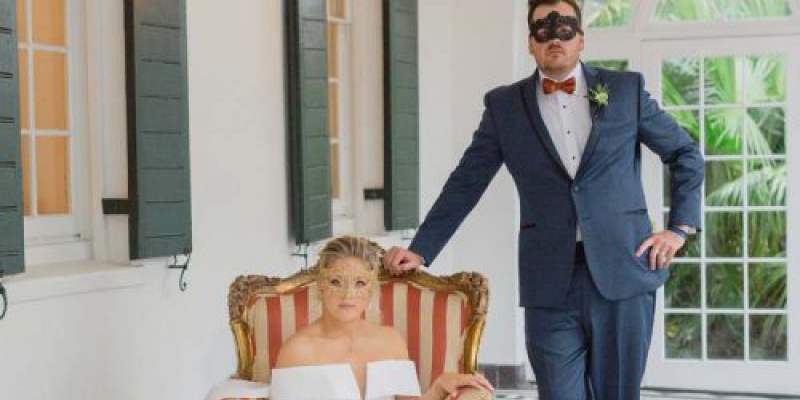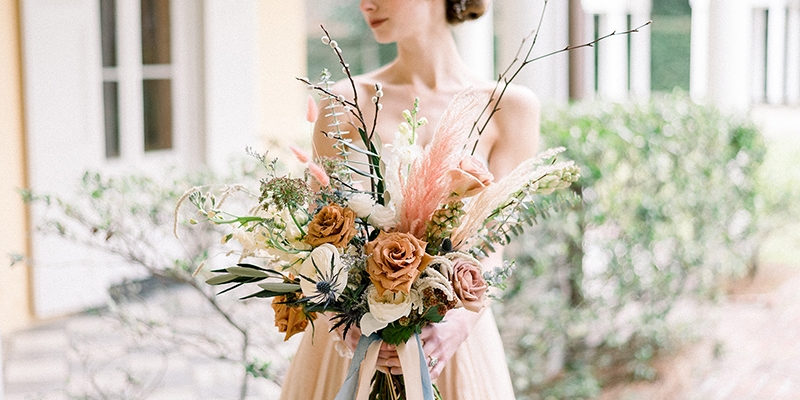
One good thing about a tight economy? Budget is no longer déclassé to discuss. And nowhere is it more practical to address than for your wedding. Whether you have a seven-figure affair or the local average of about $25,000 to spend, sticking to that bottom line and stretching your dollars is the name of the game. Here’s how to put on your dream wedding without a disastrous bill.
STEP ONE: Establish how much you have to spend on your wedding.
STEP TWO: Apply these ballpark percentages to that figure to determine the dollar breakdowns.
• Reception (location, cake, food/beverages, rentals): 40-50%
• Attire (gown, tux, hair/makeup, accessories): 10-12%
• Décor/Flowers (ceremony and reception): 8%
• Music (ceremony and reception): 7-10%
• Photos/Video: 7-10%
• Gifts/Favors (welcome bags, reception guest gifts): 3-4%
• Ceremony (officiant, location): 2%
• Stationery (invitations, thank yous, postage): 2-3%
• Wedding Rings: 2%
• Transportation (couple, guests): 1%
• Miscellaneous: Remaining percent
*Don’t forget to add 5% of the subtotal for tips and taxes.
STEP THREE: Determine what can be done on your own, what can be farmed out to reliable family and friends, and what is best left to professionals.
STEP FOUR: See if these savvy solutions might work for you.
Location: Hold the ceremony and reception at the same location to eliminate double location fees and travel expenses. Backyard garden weddings obviously save money, too.
Guest List: Trimming your invite list is the fastest way to maximize—and save—your dollars.
Date: Pick an off-peak date and/or time (Saturday noon and on is peak time) and see if vendors and/or locations will cut you a deal.
TIP: They might be able to book more than one wedding that day; or they might not have any weddings on that day, which means they might be more flexible about rates.
Food: Brunch is less expensive than dinner; hors d’oeuvres are less expensive than a meal; “food stations” are less expensive—typically—than a formal, sit-down dinner.
Beverages: Elect for a signature cocktail and wine or beer, rather than an open bar to cut liquor costs.
Attire: Look for past-season gowns and local sample sales for deals. Off-the-rack white evening gowns can work as wedding apparel, too. Check out our fashion features here for inspiration.
Flowers: Choose blooms—or greens—that are in-season at the time of your wedding and the cost should go down. Work with local farms to see about growing blooms for your event. Look into wholesale local florists (they are open to the public) to source flowers and foliage. See what you can make on your own (wreaths, tabletop flowers, garlands) and what you need to hire out.
Cake: A dessert bar (homey cakes, pies, cupcakes, sweets) can be less pricey than a formal cake. And a smaller formal cake—especially one without fondant—with cut slices of sheet cake for guests also saves money. If you have a friend or family member who can bake and ice a pretty cake, you can dress it up with fresh flowers, and other DIY crafts. Check out some of our cake ideas here.
Stationery: Instead of a printed menu, get creative. Chalkboard signs work for, say, a homespun supper reception at the Cotton Dock.
Music: iPod receptions are becoming more popular, but nothing beats live music for a ceremony. If cost is a factor, look into student musicians, but know that professionals tend to be more reliable. If you go the iPod route, you’ll still need to appoint a DJ.
Décor: Paper lanterns, mason jars with candles, ribbons streamers…there are lots of inexpensive—and environmental friendly—ways to save on décor.
Favors: Centerpieces fashioned from small potted plants and flowers can also be your guests’ “green” favor. Otherwise, make your own favors and welcome bags. There are great local bites here (grits, benne wafers, pralines) to share. Or make a donation to a local charity in lieu of a gift, in honor of your guests. State as much on the program.
STEP FIVE: Enlist a planner. Even if some elements of your wedding are DIY, a planner/designer/coordinator will help create your budget based on what’s important to you, make sure the Big Day looks cohesive, that service runs smooth, that everyone’s where they are supposed to be, and will be that cool voice of reason amid a lot of moving parts.

